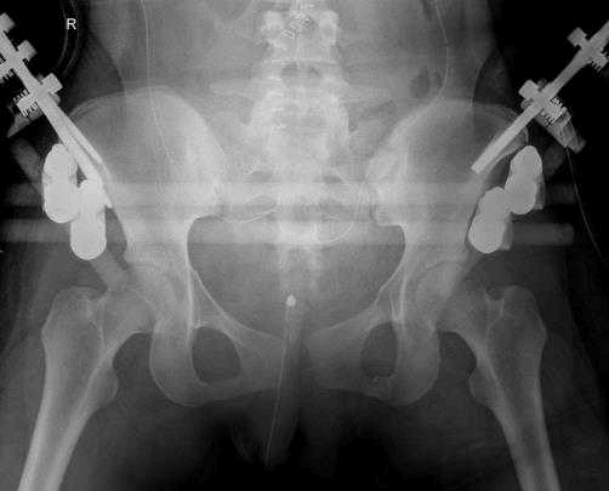 |
 |
- Search
| Trauma Image and Procedure > Volume 2(1); 2017 > Article |
|
Abstract
The current management of pelvic fracture patients with other lethal injuries who are hemodynamically unstable consists of aggressive resuscitation, emergency operation, and angioembolization. Despite this multidisciplinary approach, a high mortality rate was seen in these high-risk patients with pelvic bone fracture and other lethal injuries. Therefore, we pursued proper therapies to improve patient outcomes. We have experienced successful treatment for patients with pelvic bone plus other lethal injuries.
A 14-year-old female patient with no medical history was admitted via the emergency room with blunt trauma. At admission, she was in shock status and had a positive focused abdominal sonography for trauma (FAST) sign with a right acetabulum wall fracture, superior and inferior ramus fractures, and an open book type fracture of the pelvis (Fig. 1). In addition, she had a hemoperitoneum and peritonitis due to bowel perforation and a mesenteric injury. We planned to perform an emergency operation in a hybrid operating room with angioembolization at the same time. First, segmental resection of the jejunum was done and then angioembolization of internal iliac artery branch was performed (Fig. 2., 3.). Finally, external fixation of the pelvis was done (Fig. 4.). After 7 days, internal fixation of the pelvis was done. The patient recovered and underwent rehabilitation without complications.
Major pelvic disruption with hemorrhage has a high rate of mortality and pelvic fracture hemorrhage remains a management challenge [1]. Earlier intervention by trauma surgeons with techniques, such as preperitoneal packing, aortic balloon occlusion, and use of hybrid operative suites, may improve survival outcomes [2]. Hybrid operation room is useful for the multiple-trauma patient who needs simultaneous operation and angioembolization without any time delay.










